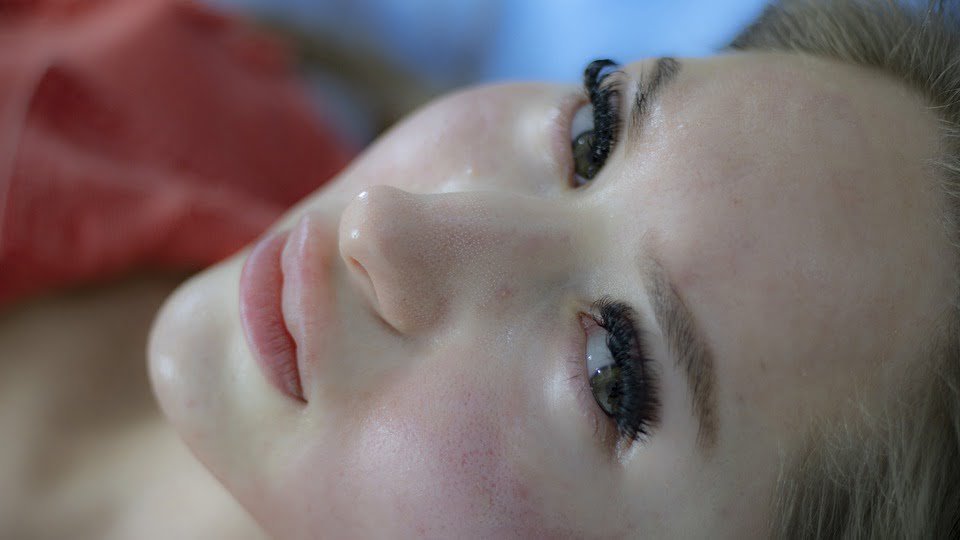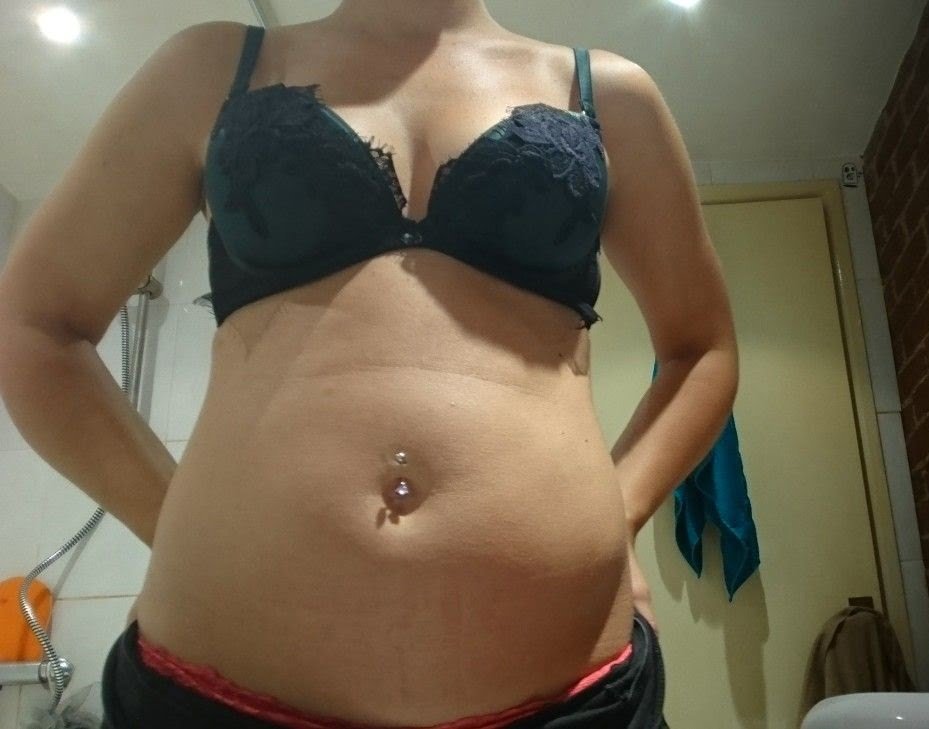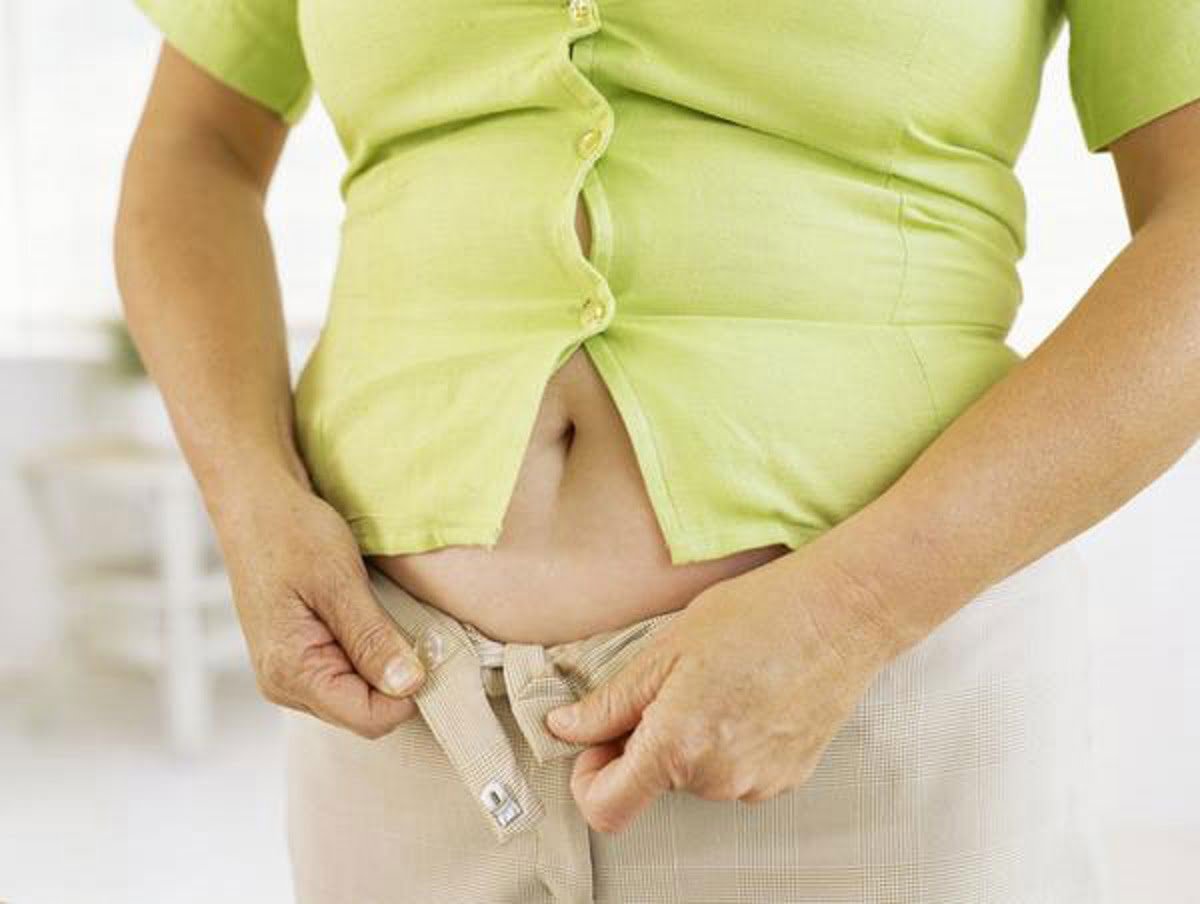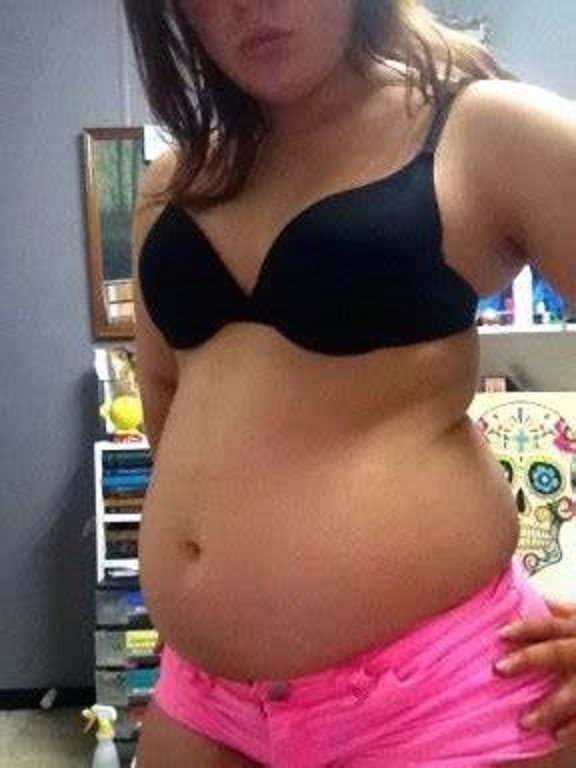What does a PCOS belly look like? PCOS affects body appearances, especially the face, genitals, and belly.
Women with PCOS have pigmented, coarse, and sweaty skin. Most women are obese with a protuberant belly like an apron. They have excessive body hair and coarse facial features.
What is PCOS (Polycystic Ovarian Syndrome)?
PCOS or polycystic ovarian syndrome as the name suggests is not just a single problem. Whenever the term syndrome is used, it denotes multiple issues that may or may not be interrelated.
However, the three common problems in patients with PCOS are:
- Ovarian Cysts
- Irregular periods, and
- Features of high androgens.
In patients with PCOS, the ovaries have a variable number of cysts. These cysts produce androgens. Androgens are primarily male hormones that are minimally released in females as well.
However, in women with PCOS, androgen secretion is high. Sometimes the levels of androgens are so high that they can reach the levels found in males of the same age.
Most of the physical appearances of females with PCOS are due to the excess androgens secreted by ovarian cysts. The most common androgen is testosterone. Thus, lowering testosterone is one of the primary targets of treatment.
How does PCOS affect your physical appearance?
PCOS is not just a female gynecological problem. It is associated with significant hormonal changes. Specifically, male hormones are elevated in the female body.
A raised level of serum testosterone in the female body imparts physical changes in the female body just like in males.
Prominent among these changes are:
- Female beard
- Loss of scalp hair
- Acne
- Deepening of voice
- Excessive pubic and axillary hair
- Sweaty groin and armpits
- Thickened belly line
- Excessive and thick hair over arms and legs, and
- Enlarged clitoris.
Can PCOS change your facial features?
Yes. Changes in facial features are among the most disturbing and common presenting symptoms of PCOS.
It is not rare that the first signs of PCOS are obvious on the face. Since the face is the most prominent and beautiful part of the females, even smaller changes are noted as they appear.
Common facial changes you may note if you have PCOS are:
Excessive Facial hair:

Excessive hair on the face:
Facial hair is associated with significant distress and social stigma. This is one of the common presenting symptoms of most females with PCOS.
Common areas of hair growth are over or under the chin, the lower part of the face like a beard, and hair over the upper lip like mustaches in men.
Facial hair can be treated by home remedies such as applying avocado, crimini mushroom, and aloe vera over the face.
Topical medications for permanent removal of facial hair include Eflornithine. It is applied twice daily for three to six months to notice significant results.
Spironolactone is commonly used to treat hirsutism or unwanted facial hair in women. It works by reducing the levels of androgens in the human body.
Other medications that may help include anti-androgens like Finasteride (Proscar), Flutamide, and progestins containing OCPs.
Occasionally, people may go for laser therapy to remove all excessive hair.
Acne is common in women with PCOS:

Acne is another common presenting symptom, especially in young girls with PCOS. Unlike puberty-associated mild acne, acne that occurs in girls with PCOS is usually severe, scarring, and non-responsive to the commonly used medications.
Acne in girls and women with PCOS is treated commonly by medications that lower testosterone levels such as spironolactone and finasteride.
Clindamycin topical gel (Dalacin-T) twice daily, Acne soaps, and face wash may help some people.
Severe cases are treated with topical or oral retinoids (Vitamin A derivatives) and antibiotics.
Male pattern baldness in women with PCOS:
Just like men with high testosterone levels develop hair loss, male-pattern baldness is common in girls and women with PCOS.
It can be treated with topical minoxidil, zinc supplements, and anti-androgens like Finasteride and Flutamide.
Oily Skin:
Women with PCOS commonly complain of oily skin (and super oily skin). Oily skin is common in females who have acne. Rather females develop oily skin followed by acne.
Since oil production (or sebum production) is increased because of the raised testosterone levels, the pores sometimes get blocked, swell, get infected, and result in scar formation.
Oily skin should be treated by avoiding makeup and topical creams that make your skin oily.
Cleansing face washes might help.
Lowering testosterone levels using anti-androgen medications may be used as well to lower sebum (oil) production in females.
Enlarged lips and nose:

Females usually notice an enlargement of the nose and lips. This is again a result of high testosterone levels.
This is not very commonly seen because it occurs after the condition is left untreated for a long time.
In addition, it occurs in females with markedly elevated levels of testosterone levels.
Changes in breast volume:
Females with PCOS usually notice changes in their breast shape and size. However, these symptoms are rarely reported because of the obvious nature of the symptoms.
Females with PCOS usually notice that their breasts are not as normal as other women’s. They don’t feel feminine because of their small, widely-spaced triangular breasts.
Apart from having small breasts, females with PCOS also notice increased pigmentation around the nipples (Areola), hair growth over the chest, and acne.
Estrogen and other hormones may improve breast size, however, most people prefer breast augmentation supplements.
PCOS and Genital Appearance:
Females with PCOS develop pigmentation of the labia, enlarged clitoris, and increased thigh and pubic hair.
Females with PCOS may have slightly increased libido due to the high levels of testosterone levels in their blood. However, because of the associated psychological distress, women may totally lose their libido.
Females may also observe changes in vaginal discharge. Vaginal discharge may become thicker and more excessive.
Sometimes, females may notice spotting during their monthly periods without actual menstrual blood flow.
Pelvic pain is almost present in all females with PCOS and is more common during menstrual cycles and the mid of cycles.
Excessive Body Hair:
Apart from the hair over the face and chin, excessive body hair is also noted over the limbs, around the nipples, pubic area, and axilla (armpits).
Body hair is psychologically very disturbing and can be treated by medications that lower body androgen levels like Finasteride (Proscar) and Flutamide) or Oral hormonal Contraceptives.
Laser therapy is usually considered a last resort.
What Does a PCOS Belly Look Like?
A PCOS belly is not one of the prominent symptoms of PCOS. However, girls and women with PCOS are very self-conscious about their facial features and belly.
The belly is not considered an organ for sex appeal, however, a flat, smooth, fair-skinned, belly is what most women desire.
Most women and girls with PCOS have a protuberant belly, particularly in the lower part of the belly.
Women with PCOS have excessive fats around their viscera and subcutaneous skin that makes the belly look like an apron.
A hanging belly can be easily pinched and the amount of body fats can be estimated by using different formulas.
Apart from hanging belly fat, apron belly, and protuberant belly which are all associated with obesity and weight gain in patients with PCOS, these patients also have excessive hair over their belly and around the belly button.
The belly button is commonly hyperpigmented and acneiform lesions may also appear around the belly button.
The waistline is increased. Most women are overweight and tend to have an “apple-shaped” body, unlike the most common “pear-shaped” or “hour-glass shaped” female body.
Pot Belly can also be a result of weak abdominal wall muscles. In addition, females with PCOS may have concomitant IBS.
IBS or irritable bowel syndrome is a functional disorder of the intestines. Females commonly have bloating, abdominal gases, altered bowel habits, palpitations, and anxiety.
Constipation or diarrhea alternating with constipation is common. People get some relief after defecation.
Sugar-containing or sugar-free gums and carbohydrates can add to belly problems in females with PCOS.
Females with PCOS bellies can get some relief by changing their diet to low carbohydrates and high proteins, reducing sweetened beverages, and gas-forming food items such as beans.
People may opt for liposuction, cool sculpting, or bariatric surgery. However, regular exercise, 20 minutes of HIIT exercise, and supplements like berberine and inositol may also help [Ref].
In addition, novel drugs such as Wegovy or Ozempic, and Saxenda (Liraglutide) may amplify the weight loss effects of HIIT exercises and low-calorie food.
Here are a few belly pics of women: “How does PCOS Belly Look Like?”:






Does PCOS affect your Voice?
Females with PCOS, especially those with very high testosterone levels can develop a deep voice. It is usually a consequence of uncontrolled symptoms of high androgen levels.
Treatment with antiandrogens may benefit the patients but patience must be exercised as it can take months to years before the voice returns to normal.
PCOS and Mental Health:
PCOS is directly and indirectly associated with psychological issues. Apart from the stigmata of excessive facial hair, deep voice, and recurrent and resistant acne, females with PCOS also have infertility.
Infertility is commonly associated with mental and psychological upsets. It is imperative to treat the underlying disease first before prescribing antidepressants and anxiolytics.
However, psychological sessions, group discussions, yoga, and physical and spiritual therapies can be implemented all at the same time.
Weight loss can be associated with significant improvement in the physical and psychological symptoms of women with PCOS.
PCOS and Fatigue:
PCOS does not directly cause fatigue and tiredness. However, because of hormonal disturbances and psychological distress, most females develop fatigue, lethargy, and tiredness.
PCOS and Weight Gain:
Most females with PCOS have underlying metabolic syndrome. They have concomitant hypertension, diabetes, abnormal lipid profiles, insulin resistance, and obesity.
Treatment of the comorbid conditions is essential to treat the patient as a whole. Hence, consultation with an endocrinologist, internist, and gynecologist is important.
Weight gain should be treated as one of the first priorities as it is associated with significant improvement in hormonal profiles, infertility, diabetes, hypertension, and deranged lipid profiles.



